Some travel days are filled with joy and wonder. Others leave you quiet, heavy with emotion. Our visit to the Killing Fields and the S21 Genocide Museum in Phnom Penh was the latter. We knew it would be a difficult day, but we also knew it was important for us and our kids.
Before visiting, we spent time learning about Cambodia’s civil war and the regime that tore the country apart. But reading and researching only go so far. We decided to join a local tour so the boys could hear the stories directly from people connected to this place and its history. What followed was one of the most profound and haunting experiences of our travels.
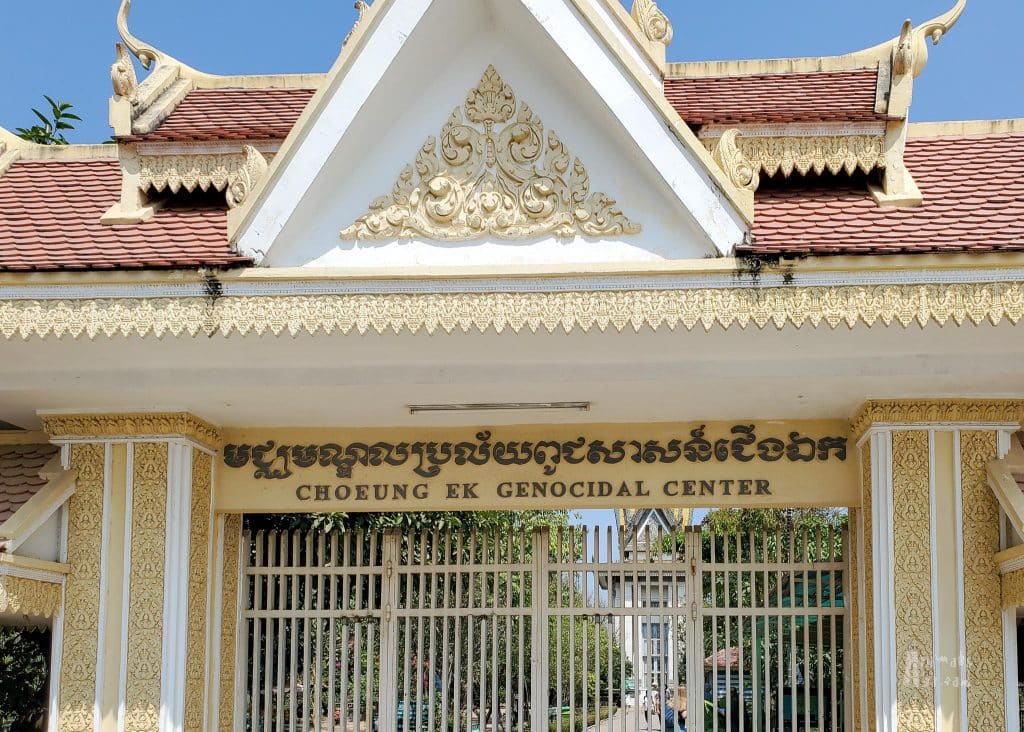
Cambodia’s Civil War and the Khmer Rouge
In the 1970s, Cambodia fell into chaos. After years of civil unrest and the spillover of the Vietnam War, the Khmer Rouge—led by Pol Pot—rose to power in 1975, promising to create a classless, utopian society. What followed was one of the worst genocides of the 20th century.
Pol Pot’s regime sought to eliminate anyone considered a threat to his vision—intellectuals, teachers, doctors, city dwellers, ethnic minorities, even people who wore glasses. Over just four years, nearly two million Cambodians—about a quarter of the population—died from starvation, forced labour, torture, or execution.
The Khmer Rouge were finally overthrown in 1979, but the scars of that time are still visible, especially at places like the Killing Fields and the S21 Genocide Museum.
Walking Through the Killing Fields
I wasn’t sure what to expect. Bones scattered across the ground? Or maybe just the quiet that settles over places where unspeakable things have happened. What we found was a site that was both horrifying and deeply respectful.
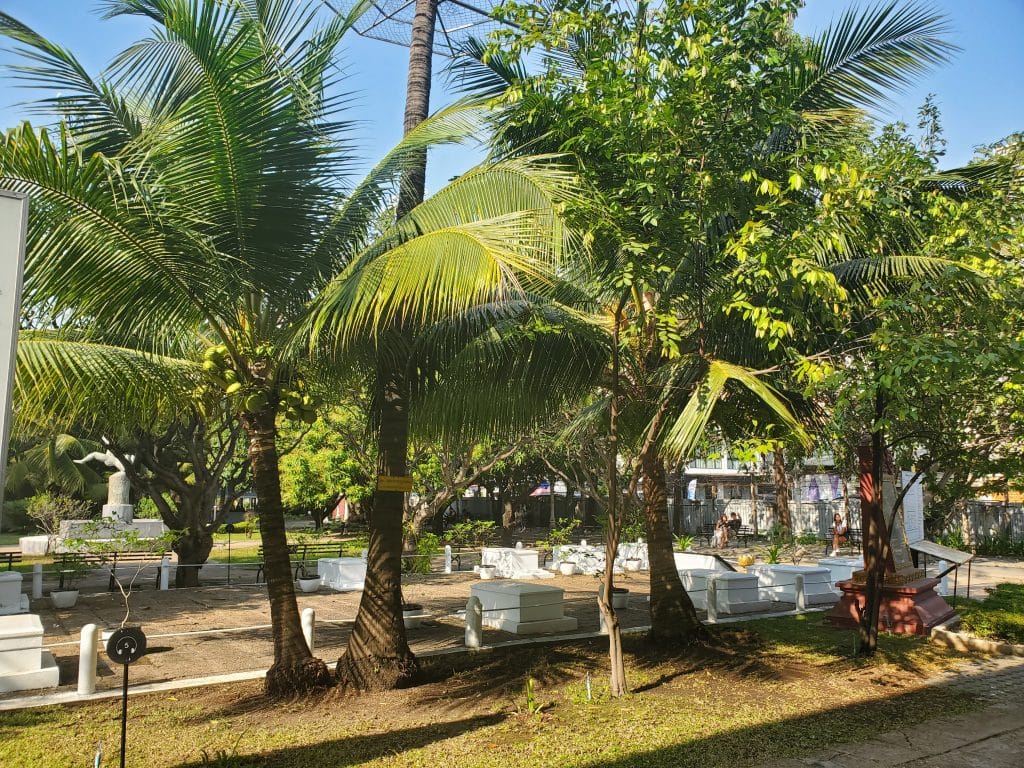
A narrow wooden bridge winds its way through the mass graves. Our guide stopped often, explaining the grim purpose of each site. Victims were brought here, often after being tortured at S21, and forced to dig their graves before being executed—usually with farming tools, because bullets were considered too valuable to waste.
Some of the pits held the remains of hundreds. And while much of the area has been excavated, bones still rest beneath the soil. Along the path, tiny white fragments—bits of bone—poke up through the dirt. Every monsoon season, the rain uncovers more.
It was sobering to walk among them, to imagine what it must have been like not so long ago. But the most challenging part—by far—was hearing the stories of children.
One tree is known as the Killing Tree. It’s where infants were murdered—either beaten against the trunk or tossed into the air and shot. It’s almost impossible to speak of. Next to that tree is a grave marked for women and children. It’s now adorned with colourful bracelets, left by visitors in remembrance. That image will stay with us forever.
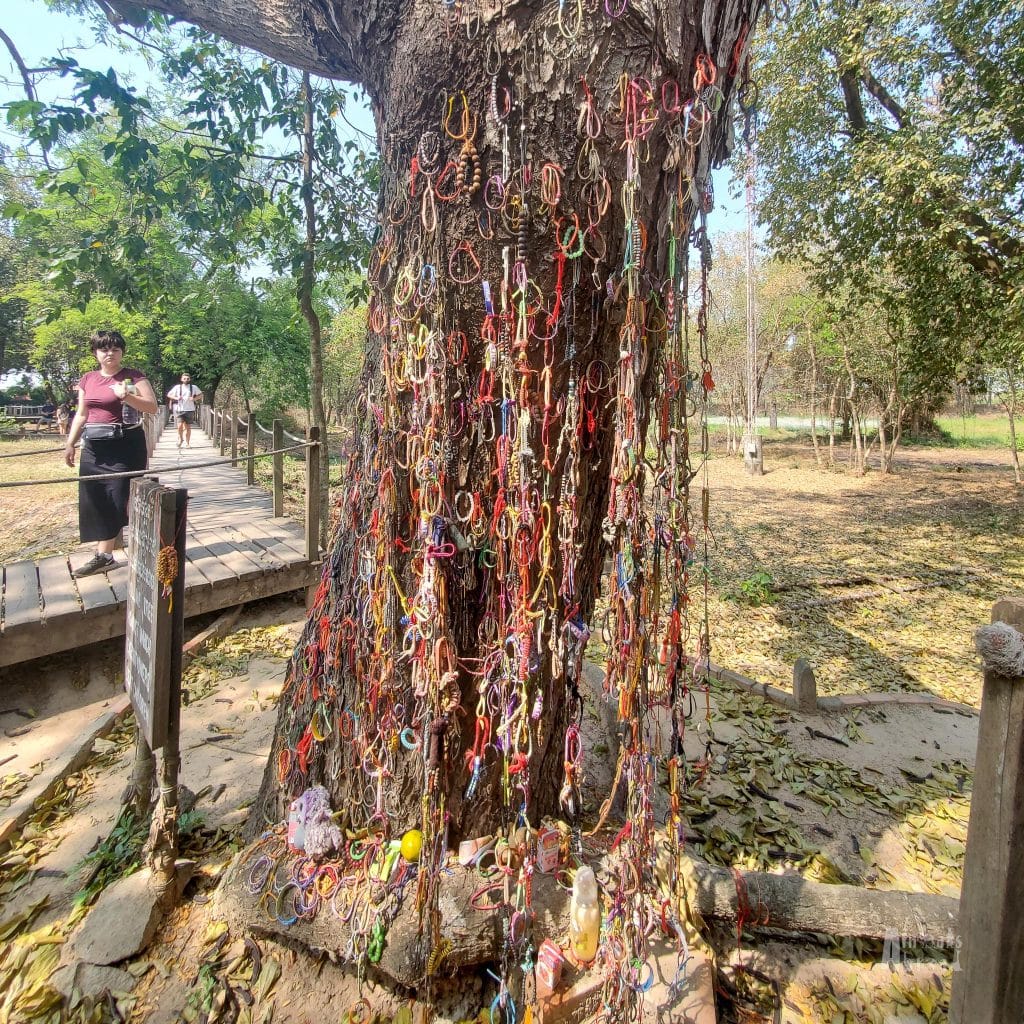
In the center of the fields stands a memorial—a tall, white structure filled with human skulls. Hundreds of them, layered one on top of another, inside a glass case. The image is meant to represent the depth of the graves. It’s a quiet, reverent space. You walk in silence. You don’t need words.
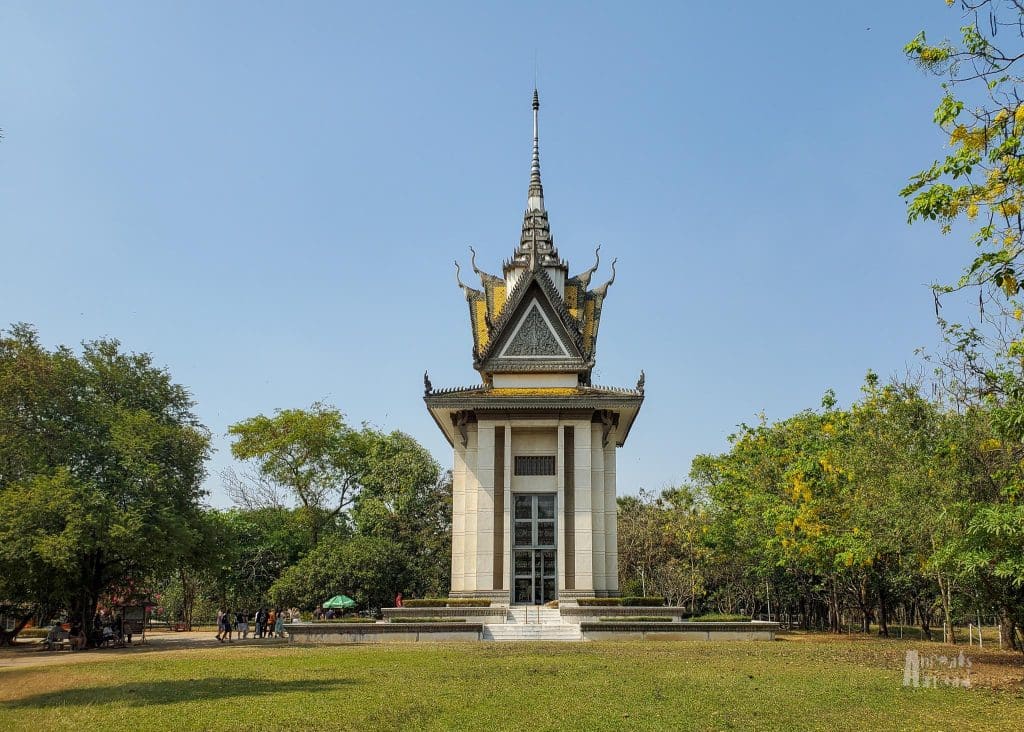
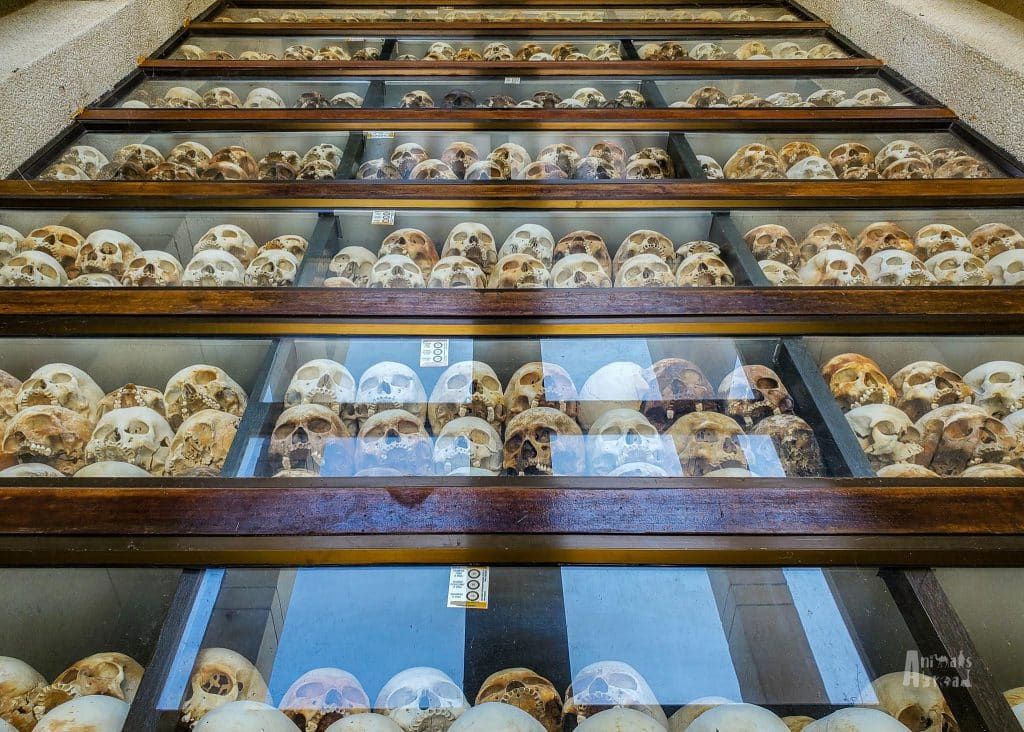
Inside S21: The Genocide Museum
S21 was once a high school. It’s hard to believe. Classrooms once full of children were turned into cells, torture chambers, and interrogation rooms. A place where men, women, and children suffered until they met their deaths at the Killing Fields.
The cells are mostly empty now, save for rusted bed frames, chamber pots, and the stories of what took place within the blood-stained walls and ceilings.
The Khmer Rouge documented everything. One block of the museum is filled with mugshots. We walked past row after row of solemn eyes. So many faces. So many stories that will never be told. None of them made it out.
Our boys needed breaks. They sat on benches outside the buildings, trying to process what they had seen. It’s a lot for anyone, let alone kids. They asked thoughtful questions and spent time in quiet reflection.
At the end of the tour, we met two survivors. Frail, elderly men who return here daily to tell their stories, reliving their pain in hopes that humanity will learn. Both had lost their wives and children. Still, they come. Still, they share. Their resilience and generosity were deeply humbling and a profound reminder that we, humans, have not learned from our past. We continue to harm others in the name of power.
Should You Visit With Children?
This is not an easy place to visit—and it’s certainly not right for every child. As parents, you know your kids best. Our boys were old enough, and we had laid the groundwork with reading and discussion before visiting. Even so, it was emotionally overwhelming at times. But it was also powerful, meaningful, and memorable.
There are lessons here that no textbook can teach—lessons about humanity, power, and the importance of remembering. For our family, this day wasn’t just about learning history. It was about honouring those who suffered and ensuring their stories are not forgotten.
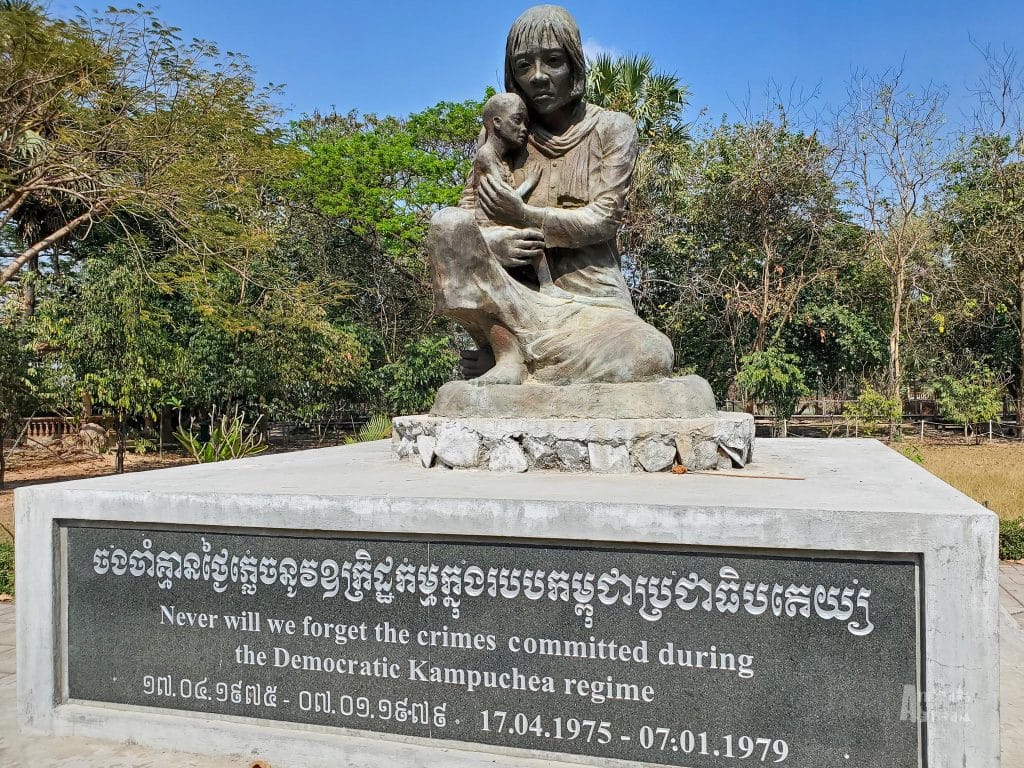
Ready to Explore Cambodia?
Check out these related posts to help plan your trip:
• Up Close with Pangolins: Cambodia’s Phnom Tamao Wildlife Reserve
• Three-Day Itinerary in Siem Reap with Kids
• Fun Things to Do in Siem Reap with Kids
• Exploring Angkor Wat with Kids
• Meeting the Hero Rats: A Family Visit to the Apopo Centre in Siem Reap

